Potřebujeme váš souhlas k využití jednotlivých dat, aby se vám mimo jiné mohly ukazovat informace týkající se vašich zájmů. Souhlas udělíte kliknutím na tlačítko „OK“.
ASTM C1155-95(2013)
Standard Practice for Determining Thermal Resistance of Building Envelope Components from the In-Situ Data
Automaticky přeložený název:
Standardní praktiky pro stanovení tepelného odporu obvodového pláště budovy komponent z údajů in situ
NORMA vydána dne 1.11.2013
Informace o normě:
Označení normy: ASTM C1155-95(2013)
Poznámka: NEPLATNÁ
Datum vydání normy: 1.11.2013
Kód zboží: NS-9756
Počet stran: 8
Přibližná hmotnost: 24 g (0.05 liber)
Země: Americká technická norma
Kategorie: Technické normy ASTM
Kategorie - podobné normy:
Anotace textu normy ASTM C1155-95(2013) :
Keywords:
calculation, heat flow, heat flux transducers, HFT, in-situ, mean temperature, measurement, thermal resistance, ICS Number Code 91.120.10 (Thermal insulation of buildings)
Doplňující informace
| Significance and Use | ||||||||||
|
5.1 Significance of Thermal Resistance Measurements—Knowledge of the thermal resistance of new buildings is important to determine whether the quality of construction satisfies criteria set by the designer, by the owner, or by a regulatory agency. Differences in quality of materials or workmanship may cause building components not to achieve design performance. 5.1.1 For Existing Buildings—Knowledge of thermal resistance is important to the owners of older buildings to determine whether the buildings should receive insulation or other energy-conserving improvements. Inadequate knowledge of the thermal properties of materials or heat flow paths within the construction or degradation of materials may cause inaccurate assumptions in calculations that use published data. 5.2 Advantage of In-Situ Data—This practice provides information about thermal performance that is based on measured data. This may determine the quality of new construction for acceptance by the owner or occupant or it may provide justification for an energy conservation investment that could not be made based on calculations using published design data. 5.3 Heat Flow Paths—This practice assumes that net heat flow is perpendicular to the surface of the building envelope component within a given subsection. Knowledge of surface temperature in the area subject to measurement is required for placing sensors appropriately. Appropriate use of infrared thermography is often used to obtain such information. Thermography reveals nonuniform surface temperatures caused by structural members, convection currents, air leakage, and moisture in insulation. Practices C1060 and C1153 detail the appropriate use of infrared thermography. Note that thermography as a basis for extrapolating the results obtained at a measurement site to other similar parts of the same building is beyond the scope of this practice. 5.4 User Knowledge Required—This practice requires that the user have knowledge that the data employed represent an adequate sample of locations to describe the thermal performance of the construction. Sources for this knowledge include the referenced literature in Practice C1046 and related works listed in Appendix X2. The accuracy of the calculation is strongly dependent on the history of the temperature differences across the envelope component. The sensing and data collection apparatuses shall have been used properly. Factors such as convection and moisture migration affect interpretation of the field data. 5.5 Indoor-Outdoor Temperature Difference—The speed of convergence of the summation technique described in this practice improves with the size of the average indoor-outdoor temperature difference across the building envelope. The sum of least squares technique is insensitive to indoor-outdoor temperature difference, to small and drifting temperature differences, and to small accumulated heat fluxes. 5.6 Time-Varying Thermal Conditions—The field data represent varying thermal conditions. Therefore, obtain time-series data at least five times more frequently than the most frequent cyclical heat input, such as a furnace cycle. Obtain the data for a long enough period such that two sets of data that end a user-chosen time period apart do not cause the calculation of thermal resistance to be different by more than 10 %, as discussed in 6.4. 5.6.1 Gather the data over an adequate range of thermal conditions to represent the thermal resistance under the conditions to be characterized. 5.7 Lateral Heat Flow—Avoid
areas with significant lateral heat flow. Report the location of
each source of temperature and heat flux data. Identify possible
sources of lateral heat flow, including a highly conductive
surface, thermal bridges beneath the surface, convection cells,
etc., that may violate the assumption of heat flow perpendicular to
the building envelope component.
5.8 Light- to Medium-Weight
Construction—This practice is limited to light- to
medium-weight construction that has an indoor temperature that
varies by less than 3 K. The heaviest construction to which this
practice applies would weigh 440 kg/m2, assuming that
the massive elements in building construction all have a specific
heat of about 0.9 kJ/kg K. Examples of the heaviest construction
include: (1) a
390-kg/m2 wall with a brick veneer, a layer of
insulation, and concrete blocks on the inside layer or
(5.9 Heat Flow Modes—The mode
of heat flow is a significant factor determining R-value in
construction that contains air spaces. In horizontal construction,
air stratifies or convects, depending on whether heat flow is
downwards or upwards. In vertical construction, such as walls with
cavities, convection cells affect determination of R-value
significantly. In these configurations, apparent R-value is a
function of mean temperature, temperature difference, and location
along the height of the convection cell. Measurements on a
construction whose performance is changing with conditions is
beyond the scope of this practice.
|
||||||||||
| 1. Scope | ||||||||||
|
1.1 This practice covers how to obtain and use data from in-situ measurement of temperatures and heat fluxes on building envelopes to compute thermal resistance. Thermal resistance is defined in Terminology C168 in terms of steady-state conditions only. This practice provides an estimate of that value for the range of temperatures encountered during the measurement of temperatures and heat flux. 1.2 This practice presents two specific techniques, the summation technique and the sum of least squares technique, and permits the use of other techniques that have been properly validated. This practice provides a means for estimating the mean temperature of the building component for estimating the dependence of measured R-value on temperature for the summation technique. The sum of least squares technique produces a calculation of thermal resistance which is a function of mean temperature. 1.3 Each thermal resistance calculation applies to a subsection of the building envelope component that was instrumented. Each calculation applies to temperature conditions similar to those of the measurement. The calculation of thermal resistance from in-situ data represents in-service conditions. However, field measurements of temperature and heat flux may not achieve the accuracy obtainable in laboratory apparatuses. 1.4 This practice permits calculation of thermal resistance on portions of a building envelope that have been properly instrumented with temperature and heat flux sensing instruments. The size of sensors and construction of the building component determine how many sensors shall be used and where they should be placed. Because of the variety of possible construction types, sensor placement and subsequent data analysis require the demonstrated good judgement of the user. 1.5 Each calculation pertains only to a defined subsection of the building envelope. Combining results from different subsections to characterize overall thermal resistance is beyond the scope of this practice. 1.6 This practice sets criteria for the data-collection techniques necessary for the calculation of thermal properties (see Note 1). Any valid technique may provide the data for this practice, but the results of this practice shall not be considered to be from an ASTM standard, unless the instrumentation technique itself is an ASTM standard. 1.7 This practice pertains to
light-through medium-weight construction as defined by example in
1.8 The values stated in SI units
are to be regarded as standard. No other units of measurement are
included in this standard.
1.9 This standard does not purport to address all of the safety concerns, if any, associated with its use. It is the responsibility of the user of this standard to establish appropriate safety and health practices and determine the applicability of regulatory limitations prior to use. |
||||||||||
| 2. Referenced Documents | ||||||||||
|
Podobné normy:
Historická
1.5.2010
Historická
1.9.2012
Historická
1.5.2012
Historická
1.10.2010
Historická
1.4.2014
Historická
1.10.2006
Doporučujeme:
Aktualizace zákonů
Chcete mít jistotu o platnosti užívaných předpisů?
Nabízíme Vám řešení, abyste mohli používat stále platné (aktuální) legislativní předpisy.
Chcete vědět více informací? Podívejte se na tuto stránku.


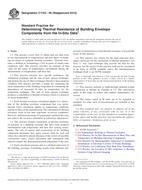
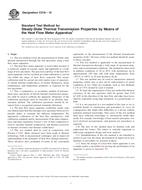 ASTM C518-10
ASTM C518-10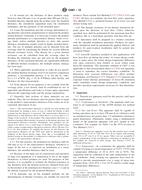 ASTM C687-12
ASTM C687-12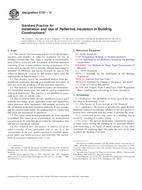 ASTM C727-12
ASTM C727-12 ASTM C755-10
ASTM C755-10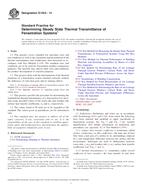 ASTM E1423-14
ASTM E1423-14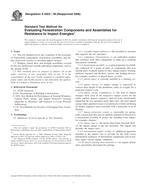 ASTM E2025-99(2006)..
ASTM E2025-99(2006)..
 Cookies
Cookies
